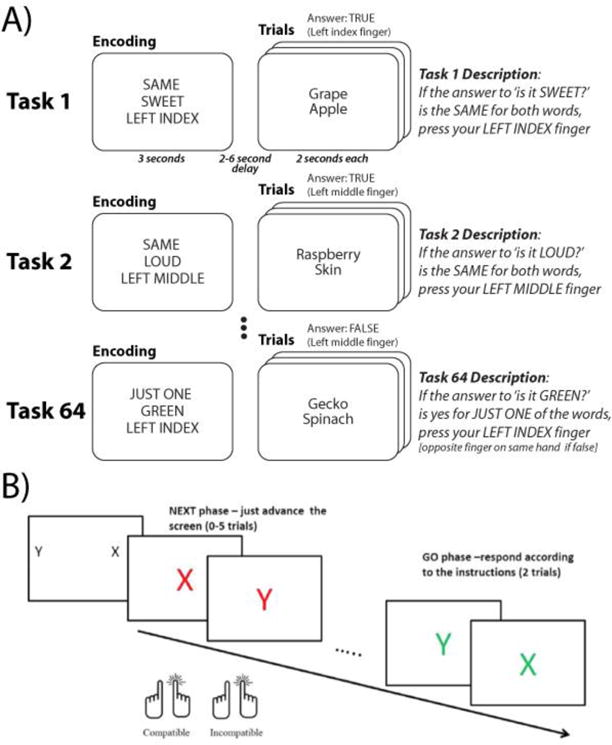Figure 2. RITL cognitive paradigms.

A) The permuted rule operations (PRO) paradigm involves performance of novel combinations of 12 elementary task rules. Each task involves three elementary rules including a logical decision rule, a sensory semantic rule, and a motor response rule. Four of the tasks (each, a unique combination of three elementary rules) counterbalanced across participants) are practiced, while the remaining 60 tasks are novel. Adapted from (Cole et al., 2011). B) The NEXT paradigm begins with instruction of two novel arbitrary mappings, one stimulus (in this case, a letter) indicating a left pointer finger button press and another stimulus indicating a right pointer finger button press. An intermediate “NEXT phase” involves pressing one of the buttons to simply advance the screen. However, pressing the button incompatible with the maintained task set produces slowing (interference) with the screen advancement. The GO phase involves implementation of the learned task set. Adapted from (Meiran et al., 2016a).
